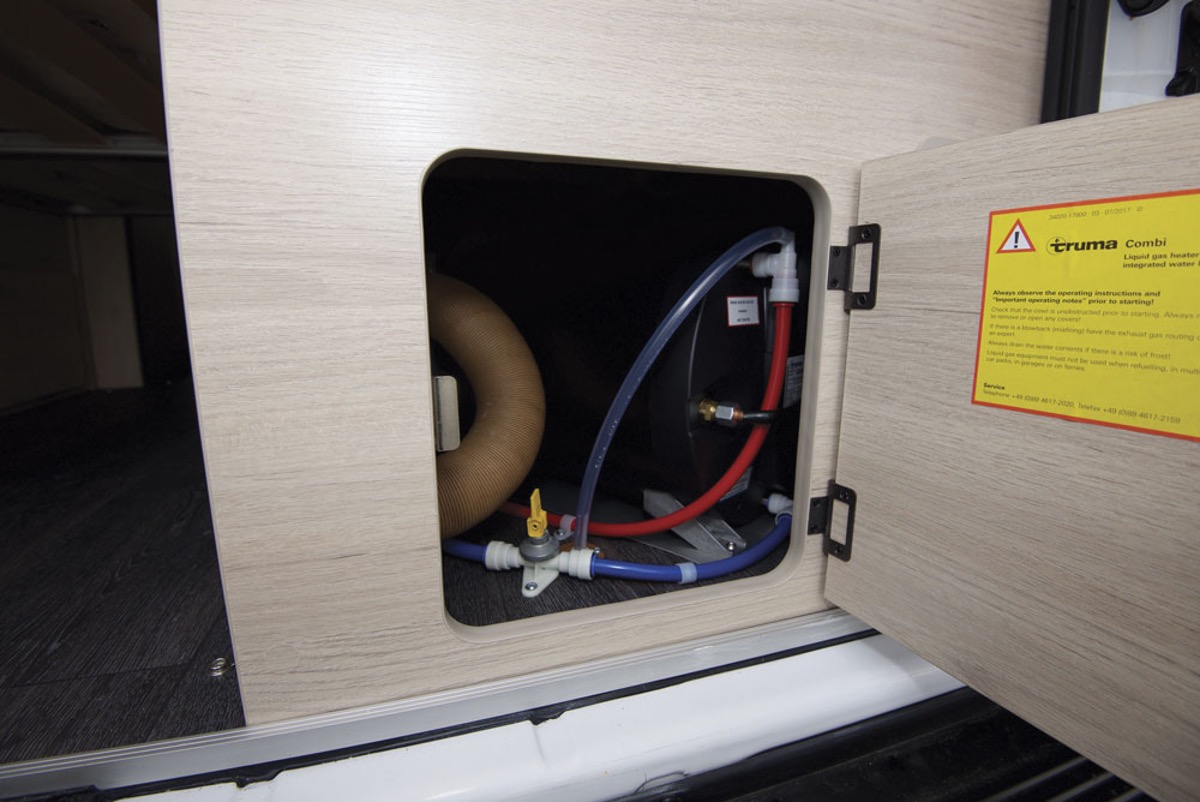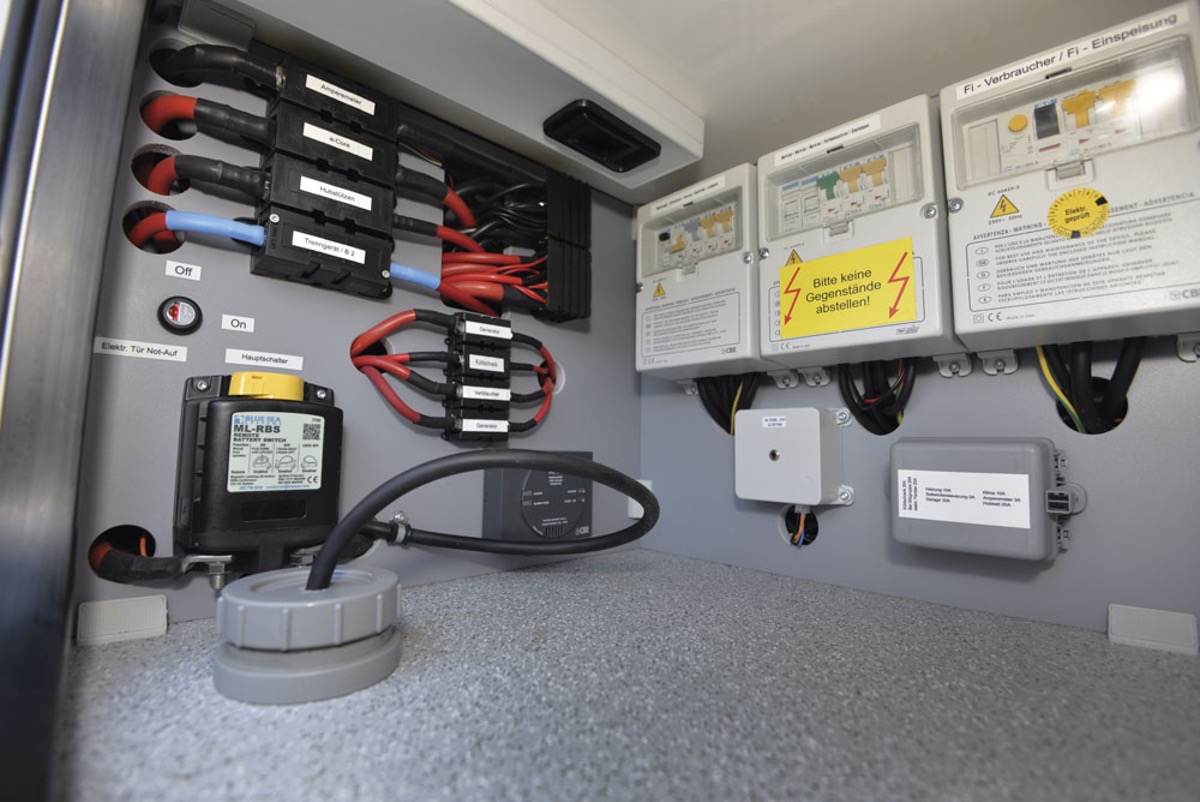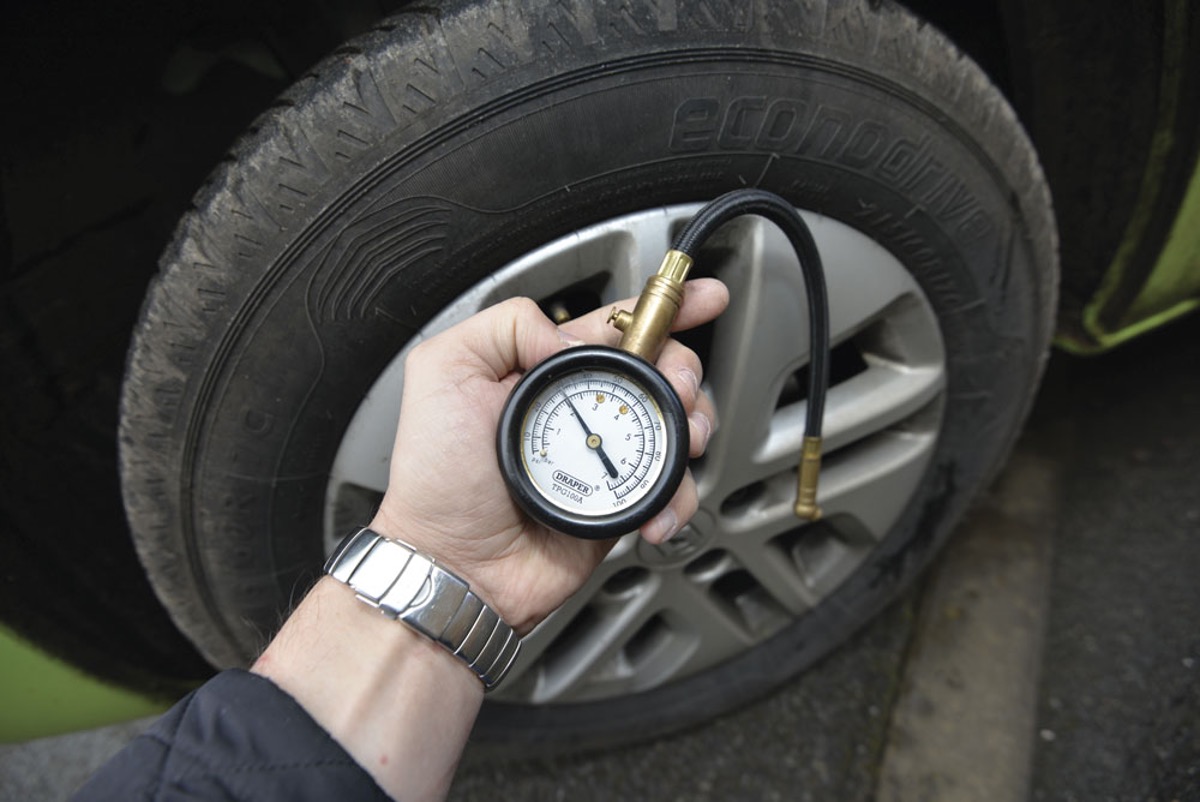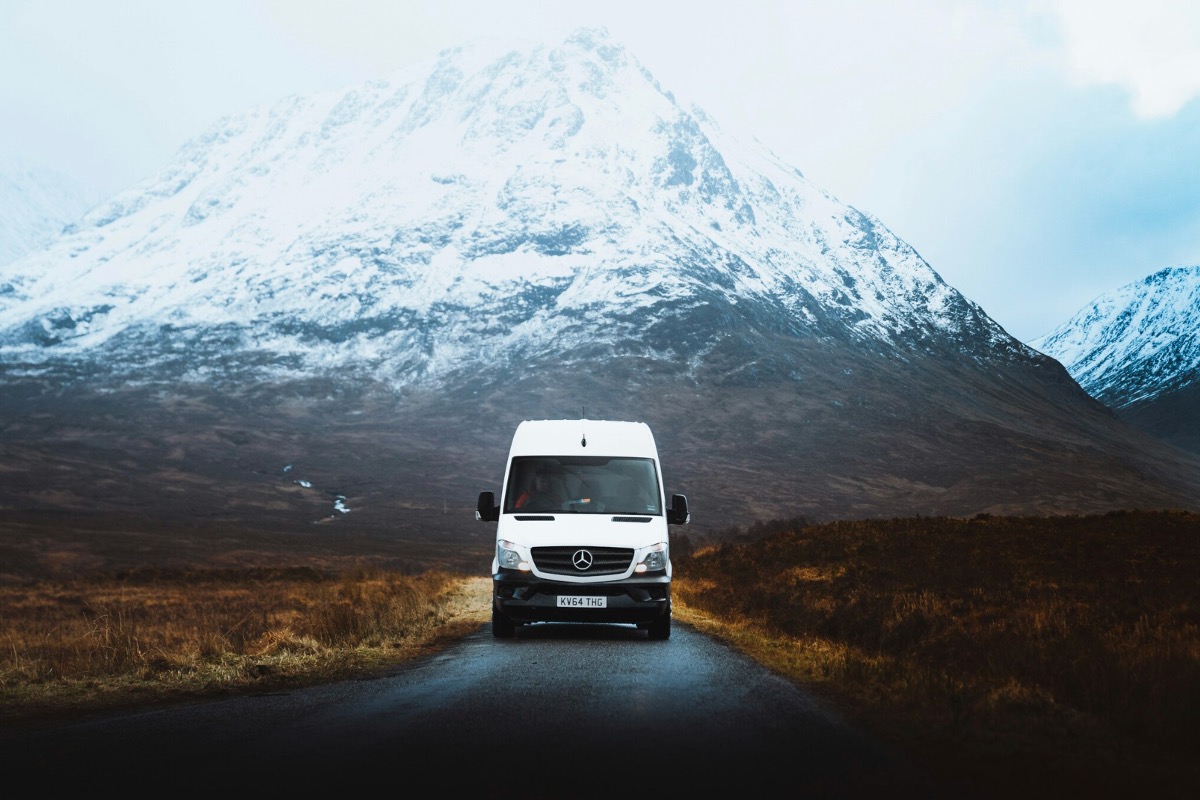Campervans in winter: all you need to know
Campervans, often associated with sunny summer days, can be a cosy haven even in the chill of winter
If you're a UK campervan owner, you know that campervanning in winter requires some preparation and a few creature comforts.
From insulation to water management, here's your guide to preparing your campervan for the colder months, whether you will be using it or putting it into storage for winter
Page contents
- How to winterise your campervan
- Storing your campervan in winter
- Keeping warm in your campervan
- Top tips for winter camping
- Driving your campervan in cold weather
- FAQs
- Final thoughts
- About our magazines
Words by Iain Duff
How to winterise your campervan
The key to ensuring the longevity of your campervan lies in regular use. Campervans left idle for extended periods risk various issues, including flat tyres, hardened engine components, drained batteries, frozen water systems, and the unwelcome presence of mould and rodents. But, while winter might offer excellent opportunities for exploration, not everyone can keep their wheels rolling during the colder months.
The practice of preparing your campervan for the colder months is called winterising. Even if your campervan is destined for long-term storage, occasional drives are essential. A 10-mile journey every few weeks, with the engine reaching full operating temperature, prevents issues like carbon deposits in diesel engines. Driving also rotates the tyres, preventing flat spots, and keeps engine belts from sitting in one position for too long.
Protect your campervan against rodents
Winter is a prime time for furry creatures seeking refuge from the cold. Inspect your campervan for evidence of rodent activity, especially in the engine bay and wiring runs.
Consider solutions like moats, mesh cages, ultrasonic devices, traps, sprays, or even the age-old solution of a cat.
Storing your campervan in winter
By following these comprehensive winterising tips, you'll ensure that your campervan is ready to hit the road when spring arrives, providing you with many more memorable adventures.
Water system maintenance

(Photo courtesy of Peter Rosenthal)
Not everyone wants to use their campervan during the colder months, and if you want to put it into storage over winter, the most important thing you need to do when you are not using it for long periods of time, is to drain down the water systems.
Drain the main fresh water and boiler systems, ensuring that both hot and cold water systems are allowed to drain. For added assurance, take a drive with the water taps open. If not practical, consider drain-down kits or pressurised air to remove any remaining water. Don't forget to remove water filter cartridges, and check the antifreeze level in wet heating systems.
For campervans with portable water containers, ensure they are emptied, and the pump and pipes are removed before freezing temperatures set in.
Clean your campervan
Before parking up for winter, give your campervan a thorough cleaning, inside and out. Mould can thrive on residual moisture from drink or food residue, so ensure all surfaces, including the fridge, are spotless.
While venting helps prevent damp, it's debatable whether heating the interior is necessary, especially if water systems are drained.
Keep batteries on charge

(Photo courtesy of Peter Rosenthal)
Flat batteries are a common winter woe. Keep leisure and vehicle batteries on charge using mains hook-up or smart chargers. Consider solar panels for outdoor storage, ensuring they have regulators and sufficient capacity.
Covers and dehumidifiers
Use breathable, vented covers for outdoor storage to protect against UV degradation and atmospheric grime. Dehumidifiers, whether powered or unpowered, help combat moisture inside the campervan.
Remove bedding and cushions
Whether using a dehumidifier or not, remove bedding to allow air circulation. If space allows, remove seat and bed bases to further facilitate airflow. Airing out the campervan periodically and putting the pop-top up can prevent odours and condensation build-up.
Tyre flat-spotting

(Photo courtesy of Peter Rosenthal)
Inflate tyres to the maximum to prevent flat spots. If temporary flat spotting occurs, drive the vehicle to warm up the tyres and then raise it off the ground to relieve the load.
Fill the fuel tank
To prevent degradation, ensure the fuel tank is full, especially for extended storage. Consider adding a stabiliser to the fuel for prolonged periods of inactivity.
Keeping warm in your campervan
If peace and solitude are what you crave then there really is no better season to get out in the campervan than winter. Many campsites are empty and, if you brave wild camping, you’ll be lucky to see another soul. Wrap up warm and you’ll struggle to beat being outdoors, too.
Best of all: you won’t have to fight for the fireside spot in the pub, either! Yes, it’s true that camping in winter can be harsher than at other times of the year but, as long as you’re well prepared, winter campervan trips are awesome!
Insulation
A properly insulated campervan is your first line of defence against the winter chill. Many campervans come fully insulated, with plastic wadding, panelling, and a textile surface to maintain a moderate temperature inside.
This insulation not only keeps you warm in colder temperatures but also helps in maintaining a comfortable atmosphere during hotter days. Good-quality window covers are essential. Opt for an external windscreen cover to prevent condensation on the inside of the windscreen, which can be severe when cooking and washing activity is going on inside.
Heating a campervan
In smaller campervans, diesel heaters tend to be the most popular option. The advantage is they don’t need an electric hook-up, and, while they use diesel from your tank, the consumption is so low you don’t have to worry about draining it dry just to keep warm. If you’re on electric hook-up, an electric heater is a possibility, though rising electricity prices means seeing campsites metering their EHU points or restricting such heavy usage.
In bigger campervans, things are a bit easier as your heating is often part of the build. For many, that heating is run on gas from an LPG cylinder stored somewhere in the campervan, either in a cupboard or underslung. That means home-style central heating to keep you warm at night, or when you get back from a day out in the cold.
If you don’t have electric or fuel-powered heating built into your camper, there are some alternatives. Small electric fan heaters are easy to come by and are very efficient in small spaces (make sure you stipulate you need EHU when booking campsites). Don’t boost your heating by using your gas hob and/or oven as they use up oxygen and create a small amount of dangerous carbon monoxide. NEVER bring a charcoal barbecue into your motorhome or awning while still warm.
Carpets
Nobody wants to step onto a cold floor in the morning. Adding floor mats or carpets to your campervan not only provides extra insulation but also brings a touch of homeliness to your space.
Consider internal insulation mats (bubble wrap could be a cheaper alternative) for rooflights and wrap-around insulation for pop-tops.
Carpet the floor and lay carpet underlay in the large bed lockers to improve floor insulation.
Using bottled gas
Only propane gas cylinders should be used in winter; butane ceases to gas off as the temperature approaches freezing. Propane continues to gas off until -40°C.
What to wear
Layers are a great way to keep warm in winter – that way you can add them or take them off as the temperature changes or if you get warmer when you step inside somewhere with heating.
If you are planning on enjoying the great outdoors, it can be wise to take some spare clothes in case anything gets wet, and a spare pair of warm socks is always useful. A few warm blankets or a warm overcoat or Dryrobe-style, waterproof snuggle coat can be handy to make sure you don’t feel the chill.
What else to take
Campervans are cold at night, so it’s important to have good bedding. Everyone’s bedding preferences are different, of course. Some people like a sleeping bag – either individual or double – for warmth, ease of packing, and that classic camping feel. Others want to recreate their home bedroom with pillows and duvets.
Whichever you choose, in the winter months the key is whether you’re warm enough because being cold at night when camping can ruin a trip. You might want to consider a hot water bottle, a pair of fluffy socks and a woolly hat to keep you toasty and warm when the temperatures plummet.
Top tips for winter camping

(Photo courtesy of Unsplash)
- If you fancy sitting around a campfire, before deciding on your campsite, make sure fires are allowed. Some sites will supply fireboxes, in which you can have a fire without damaging the grass of the field
- Choosing the right site is important. A pub with open fires, on the campsite or nearby, is a definite asset come the evening. If you are camping with kids, check out what indoor activities are on hand for them before you head off. A games room or an indoor pool will keep them occupied no matter the weather.
- Remember that it gets dark early, so don’t leave it too late to set off from home or you’ll be setting up by torchlight.
- At bedtime, wear base layers or thermals and a woolly hat to bed instead of normal pyjamas. A small hand warmer wrapped in a sock and slipped down to the foot of your sleeping bag a couple of hours before getting into it will help to keep you warm.
- Sleeping bags and duvets will lose insulation values when damp so try not to sleep with your head under the covers breathing out moisture.
Driving your campervan in cold weather
Don’t forget to top up your windscreen wash to allow for freezing temperatures and ensure your last vehicle service included a check on the radiator antifreeze content.
Motoring organisations advise replacing normal summer tyres with winter tyres. Winter tyres provide better grip in all conditions, not just snow and ice when it gets below 7°C. For most, this is expensive, as well as needing somewhere to store our summer tyres. A compromise is to fit four-season tyres, providing higher grip in warmer months than winter tyres and better grip in summer than winter tyres. They don’t offer the same performance as summer or winter tyres in the seasons they are specifically designed for.
Winter tyres are mandatory in some countries, either as a national requirement during specified periods or just when roads are covered with snow and ice, while the regulations may also only apply to specific regions. These may be just recommendations, like Switzerland (except for alpine pass roads) but, if you’re involved in a crash, there are likely to be liability issues if you were using summer tyres.
In some countries, snow chains must be carried and used as required by local conditions. Reduced speed limits will apply when snow chains are fitted, and this should be when the road is fully covered by snow or ice. Also available are snow socks; they’re not an alternative to chains but a low-cost and easy-fit solution to help get you out of trouble on soft snow. Socks have to be removed when you reach a clear road surface, otherwise they will be shredded.
A few countries stipulate a minimum tyre depth of 3mm, 4mm or even 5mm in winter rather than the European and UK normal minimum of 1.6mm. Tyre experts recommend we change our tyres well before the 1.6mm because of the significant increase in braking distance in wet weather as depths approach 1.6mm. The recommended minimum tread depth is 3mm for summer tyres and 4mm for winter tyres.
With these tips, you can ensure a cosy and comfortable campervan experience even in the coldest winter months. Whether you're a seasoned winter camper or venturing out for the first time, being well prepared will make your journey enjoyable and worry-free. Stay warm and happy camping!
FAQs
Do I need an emergency breakdown kit?
Although it’s not essential in the UK, as it is in many other countries, it’s a good idea to have one. If you get a puncture on a dark, country lane you’ll be glad of a hazard warning triangle and high-vis jacket. Similarly, carry a basic toolbox and things like a set of light bulbs and fuses, jump leads and a towrope.
Do I need a special driving licence for a campervan?
The driving licence you need depends on the campervan's weight. Category B is sufficient for most campervans, but larger vehicles may require a Category C1 licence.
Is an awning worth having in winter?
Although we get some great weather in winter, there’s no denying that it also rains a lot, so best prepare for it. Investing in an awning gives you somewhere to dump muddy boots and hang wet gear. Add a heater and you’ve got extra living quarters, too.
Do campsites open in winter?
Lots of campsites close for winter but lots also stay open, and low season is the time to grab a bargain. You might be the only guest, though, so it’s a good idea to book in advance or at least phone ahead to let them know you’re coming. Don’t expect all the facilities that are available in high season to necessarily be open now, though.
Where should I go in winter?
With short daylight hours and hazardous driving conditions, winter is the ideal time for staying closer to home and exploring the delights on your doorstep. City breaks are also a good option, as there’s plenty of indoor stuff you can do if it rains all day.
Avoid really remote places with roads that are prone to being cut off by snow, or where you’re likely to get stuck or lost.
Final thoughts
Winterising your campervan is essential for both active winter camping and extended storage. From water system maintenance to keeping warm with proper insulation and heating, carrying out these important tasks will give you a worry-free winter experience.
Remember, preparation is key; with the right precautions, you can turn cold months into cosy adventures, ensuring your campervan is ready to roll when spring arrives.
Expert Campervan advice to your door!

Campervan is the exciting monthly magazine that will give you all the inspiration you need to explore the world in your campervan.
Every issue is packed with real-life campervanning experiences, inspiring travel ideas in the UK and further afield, the best campsites to stay on, campervan road tests and reviews of the latest models, and much more!
Want to know more about Campervan magazine?
About Campervan magazineExpert motorhome advice to your door!
Why not subscribe to one of our fabulous magazines and get expert advice, travel ideas, technical help and all the latest news for your motorhome and your motorhome adventures!

Want to know more about MMM magazine?
Every month MMM has articles written by motorhomers who have been there and done it, from great UK and European (and further afield) tours, campsite reviews, owners' reports and DIY projects among other things.
MMM's tests, reviews and expert buying guides are not to be missed. MMM's technical advice is a must and includes everything from weekend jobs to longer-term DIY projects. And much more!
About MMM magazine
Want to know more about What Motorhome magazine?
Every issue of What Motorhome magazine provides essential buying advice for anyone looking to buy a new motorhome or campervan or upgrade their existing model.
With a pedigree of over 30 years of offering the best motorhome and campervan buying advice, every issue of What Motorhome includes more new motorhome and campervan reviews than you will find in any other magazine.
About What Motorhome







Recent Updates
Engine management lights: all you need to know
What is the engine management light? What does it mean, and what do I have to do? ...
Motorhome air suspension: all you need to know
Motorhomes are heavy and the additional weight of equipment and height of the bodywork can increase the loads ...
Motorhome WiFi: how to get better motorhome internet
Staying connected on the move is more and more essential, so relying on campsite WiFi isn't an option – here ...
A class of their own - our guide to A-class motorhomes
Thinking of trading up to an A-class, or even going straight to the top of the motorhome tree? We guide you ...
Explore overseas on a motorhome dream tour
Enjoy exotic travel in a campervan or motorhome by hiring, swapping with someone else or exporting your ...
Motorhome water systems: everything you need to know
On-board water is an important part of every motorhome – here’s everything you need to know ...
Campervanning in Europe: what you need to know
Whether you're planning a leisurely drive through the French countryside, navigating bustling city streets in ...
Campervan security: all you need to know
With thefts on the increase, it’s important to know how to keep your campervan secure and prevent campervan ...
Campervan furniture: everything you need to know
Our campervan experts guide you through all the essentials for your campervan, including tables, chairs, ...
Campervan finance: how to fund your purchase
Here we look at the different types of campervan finance available, to help you decide what’s the best option ...
Other Articles
Britain’s best used motorhomes
Want a great motorhome without paying the premium for a new one? Here's a guide to the best you can get in the pre-owned market for each layout, ...
Which motorhome? Choosing the perfect motorhome for you
Choosing a motorhome or campervan is one of the biggest buying decisions you’ll ever make, so it's important ...
Campervan washroom essentials: stay fresh on the road
Our guide will take you through the campervan washroom essentials you'll need so you're well-prepared for ...
Dogs in campervans: all you need to know
Follow our advice and your dog will enjoy campervanning as much as you do ...
Electric campervans: all you need to know
Our guide will take you through everything you need to know about electric campervans and what the future ...
Motorhome electrics: a complete guide to your motorhome electrical set-up
Motorhome electrics can dramatically enhance the convenience and comfort of your vehicle – but they can be ...
Lighting for campervans: all you need to know
We guide you through all the lighting options available for you and your campervan, including interior ...
Electric bikes for motorhomes: our ultimate guide
Read our comprehensive guide to electric bikes for motorhome owners, helping you add electric power to your ...
Our guide to 'cheap' motorhomes in 2024
If you're on the hunt for an affordable new motorhome, this is the best place to start – we've rounded up a ...
Six alternative campervans to the VW California
Looking for a different option to Volkswagen’s famous Cali? Here are some of the best other campervans out ...